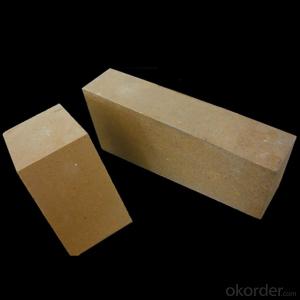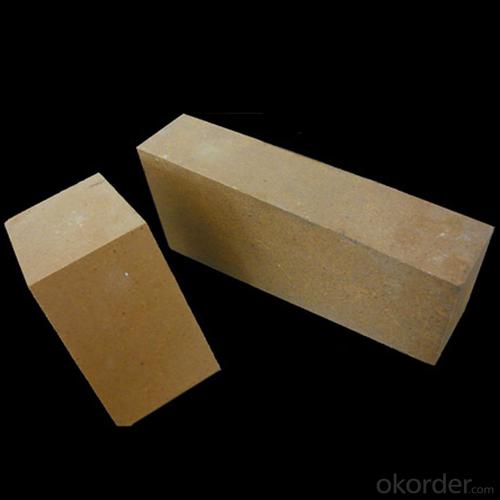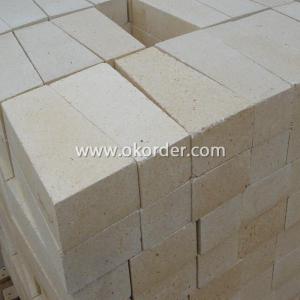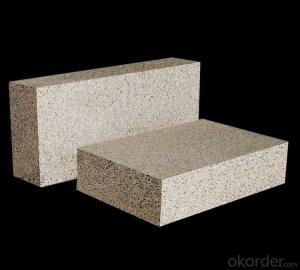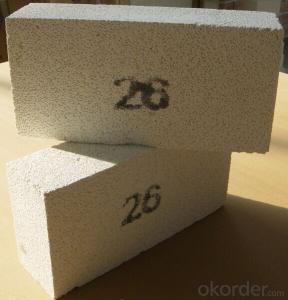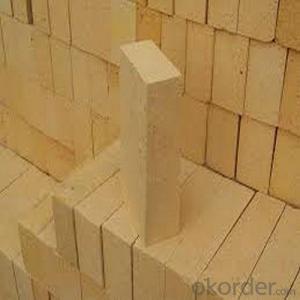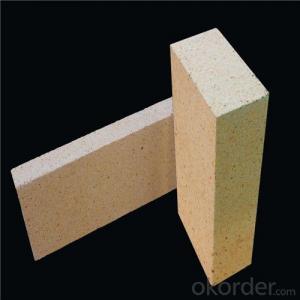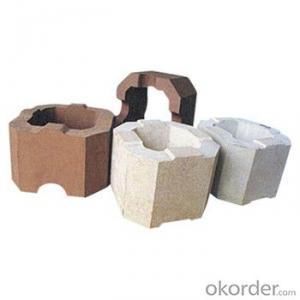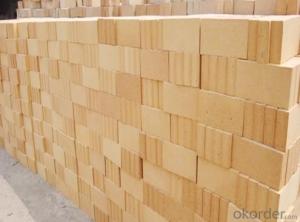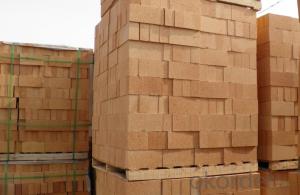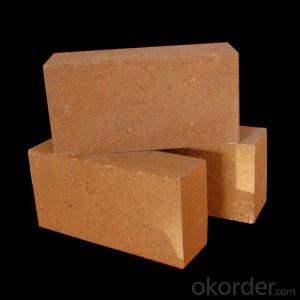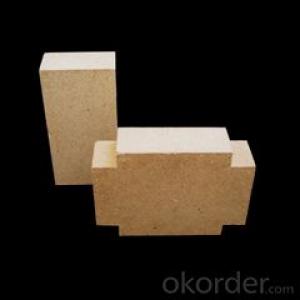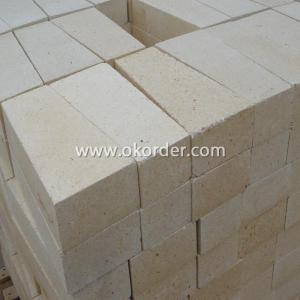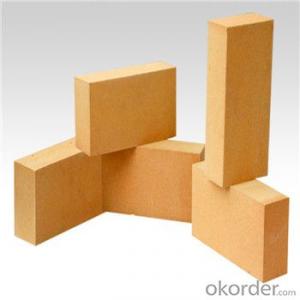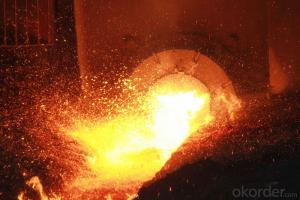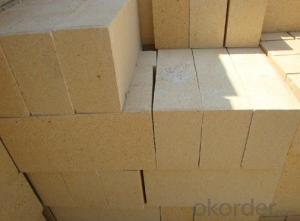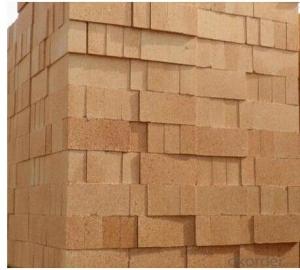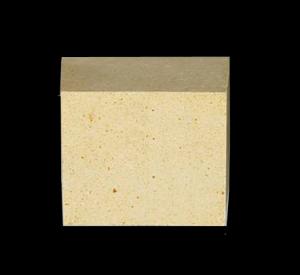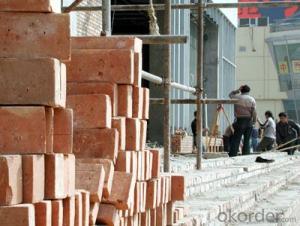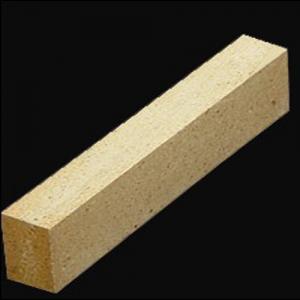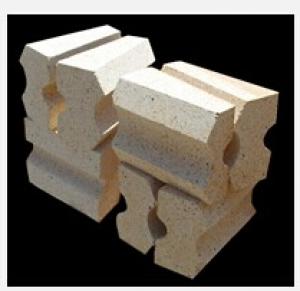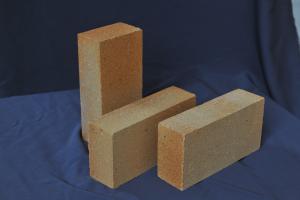Fireclay Brick - Refractory RN40 Low Apparent Propensity
- Loading Port:
- Tianjin
- Payment Terms:
- TT OR LC
- Min Order Qty:
- 20 m.t.
- Supply Capability:
- 50000 m.t./month
OKorder Service Pledge
OKorder Financial Service
You Might Also Like
FIRE CLAY BRICK---RN40
CMAX fireclay bricks are made from clinker clay. The alumina content ranges from 36% to 48%.
Application
CMAX fireclay bricks are commonly applied in blast furnace, hot blast furnace, teeming ladle, glass furnace, etc.
Features
Low thermal conductivity High refractoriness
High mechanical strength Excellent thermal shock resistance
High refractoriness under load
High mechanical strength
Excellent thermal shock resistance
Corrosion resistance.
Good resistance against acid slag
High mechanical strength
Stable performance under high temperature environment
Physical Properties:
ITEM RN40
Refractoriness, 1730
Bulk Density, g/cm3 2.15
Apparent Porosity, % 24
C. C. S, Mpa 28
Refractories Under Load (0.2Mpa), 1430
Reheating Linear Change, % 1350x2h 0~-0.3
Al2O3 Content, % 40
- Q: is it correct that the higher the refractoriness is, the better refractory bricks are?
- Does not necessarily, it has a great relationship with the compression and bending and corrosion resistance.
- Q: Can refractory bricks be used when it cracks for 1cm
- 3, If the crack is caused by burning or drying, then it can't be used. While if the carck is caused by refractory brick molding, it still can be used. 4, the crack is caused by refractory bricks raw materials.
- Q: How to repair the boiler?
- use refractory bricks and plastic refractory
- Q: What kind of refractory brick is suitable for clinker production line of 2,500 tons?
- Silicon carbide composite brick, series of refractory casting material, etc.. In addition to choose above refractories, suggested to put the thermal insulative alkali-resistant clay bricks or ordinary clay brick on the front and back kilneyes, use high strength alkali-resistant clay bricks or alkali resistant castables for arching the roof , insulating brick vault series: use direct- bonded magnesia-chrome brick in burning zone and high alumina brick in decomposing belt. if it is cement kiln then use skilled production line of 2000 tons, combined with silicon carbide brick
- Q: How aluminium oxide becomes a entity from the the form of powder (such as a ball, a stone, or a refractory brick)?
- Just like the process of making steamed bun from flour. Ball milling ---in the auxiliary material to make the slurry --- suppress the body --- high temperature calcination
- Q: Is refractory brick afraid of rain?
- High alumina clay is not afraid of rain, but covering is better, magnesium carbon refractory brick had better not be rained.
- Q: Why can't gravity retaining walls be made of clay bricks?
- The masonry of gravity retaining walls, of course, takes into account compression problems, and the use of clay bricks requires consideration of compression calculations and service life.
- Q: With what three clay brick clay brick with six holes under what circumstances?
- Different specifications, different strength, and use in different structures.
- Q: The foundation is made of Mu10, which is new clay brick and M7.5 cement mortar. What does it mean?
- MU10 is the strength of bricks, and M7.5 is the strength of cement mortar.
- Q: Can refractory bricks be used to pave roads or build a wall?
- Complete refractory brick has standard size and it is heavier than ordinary red brick. the volume ratio is shrinking with change of temperature to crack and strength of brick with brick walls down enough for new
Send your message to us
Fireclay Brick - Refractory RN40 Low Apparent Propensity
- Loading Port:
- Tianjin
- Payment Terms:
- TT OR LC
- Min Order Qty:
- 20 m.t.
- Supply Capability:
- 50000 m.t./month
OKorder Service Pledge
OKorder Financial Service
Similar products
Hot products
Hot Searches
Related keywords
